Phrazer Info Blog
Blog Menu
Login Box
Blog Links
If You're Not Performing SBIRT, Here Are a Few Reasons Why You Should
Let’s start with one fact.
For every dollar spent on screening for substance use and providing early intervention approximately $4 can be saved in healthcare costs. (1)
Quick Recap on what SBIRT is:
Screening, Brief Intervention and Referral to Treatment (SBIRT) is an evidence-based approach to identifying patients who use alcohol and other drugs at risky levels, and in turn reduces and prevents related health consequences, disease, accidents and injuries.
SBIRT is unique in that it screens for all types of substance use, not just dependencies. Each part of the SBIRT process provides information and assistance tailored to the patient’s needs.
The primary goal of SBIRT is not to identify alcohol or other drug dependent individuals, but rather, it is intended to meet the public health goal of reducing the harms and societal costs associated with risky use.
Why isn’t everyone doing it?
Well the simple answer is, multiple reasons. Time constraints and cost are two prominent factors that are always present when trying to incorporate additional activities into the care process.
In a typical family practice, providers usually have between 10-15 minutes with a patient. This isn’t anything new. Healthcare professionals already know it’s incredibly challenging to give the patient the time they need to address the initial reason for the visit, much less anything that may come up while the patient has the provider’s attention (insert patient statement “oh and I have this thing on my back, could you look at it?”). How can you expect to do more without increasing the time per patient?
When considering cost, every health organization is on a budget so optimizing every dollar to provide the maximum benefit is critical. You’re already working on a budget, and giving a dollar to a new activity can often mean taking a dollar away from some other part of care. Again, this isn’t new, but it is the harsh reality of operating a health system. So, how do you accomplish more with the same or even less budget?
A Solution to Starting SBIRT Activities
Many health organizations are looking to technology that can automate the information gathering process and provide a summary to staff for quick review. Typically they are looking for a technology that has low overhead, requiring no additional outside resources, and can be set up quickly in existing workflows to start engaging patients.
Setting Phrazer up for a patient engagement takes ~30 seconds and can be completed by an intake staff member (or the patient in some workflows). Then simply allow the patient to begin screening activities in the waitroom or wherever the patient will have wait time to complete.
With the CITE Engagements on Phrazer, patients don’t need to be able to read or write to complete and Phrazer can screen in any patient language (English, Spanish, Somali, Hmong, American Sign Language or any other language, you name it).
Phrazer actually educates the patient how to use as they start their interactions. The patient simply follows the onscreen provider and interacts with the touchscreen to enter their answers.
The patient follows a branching system to reduce survey fatigue so the patient is only asked questions that are relevant to them based on previous answers. (For example if they don’t drink alcohol, they only perform the AUDIT-C and don’t move on to complete the full AUDIT)
It is key to point out is that the patient is doing all the screening on their own without training on the device and requires no additional staff time. Outside of basic setup in some workflows you are able to completely gather this valuable information with minimal employee expenditure.
Patients typically take from 5-15 minutes to complete and when a patient is done, Phrazer generates a patient summary (See Below for example), including scores for each screener, based on the patient answers for staff to utilize during the care process.


These printouts travel with the patient, via the electronic record or paper copies, and providers can review before walking into the room with the patient. The goal is to give relevant information to the provider to identify and have meaningful conversations with at risk patients without becoming a time burden on staff. With technology, this goal is realistic with solutions that fit into the existing workflow without disruption.
Once care is provided to the patient and the provider signs off on the care provided, the records along with recommended billing codes travel to the billing team for reimbursement. Reimbursement is pushed using the patient’s health insurance (private insurance, medicare, medicaid) and in the following days, reimbursement is sent to your facility.
Through the use of technology you can reduce the cost and time burden of implementing new or upgrading existing SBIRT activities.
Let’s recap a few reasons why you should be providing SBIRT services:
1. It’s proven that preventative care including SBIRT activities reduces the overall cost of healthcare
2. You will be providing more holistic care to your patients based on additional screening information meaning a safer, healthier population
3. Insurance typically covers the cost of care and increasing your billable dollars can assist with your bottom line
If you’re curious to learn more about how existing health systems have adopted a technology approach to operationalize new processes, let us know, we would be happy to share more about our experience. Email info.sbirt@geacom.net
For more information on how to implement SBIRT in primary care, check out this NCBI study: https://www.ncbi.nlm.nih.gov/pmc/articles/PMC5809898/
(1) Fleming, M. F., Mundt, M. P., French, M. T., Manwell, L. B., Stauffacher, E. A., & Barry, K. L. (2000). Benefit-cost analysis of brief physician advice with problem drinkers in primary care settings. Medical Care, 38(1), 7–18.

